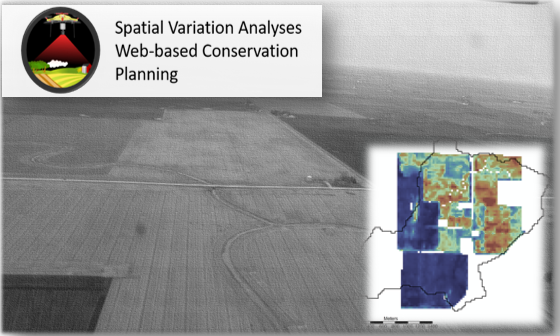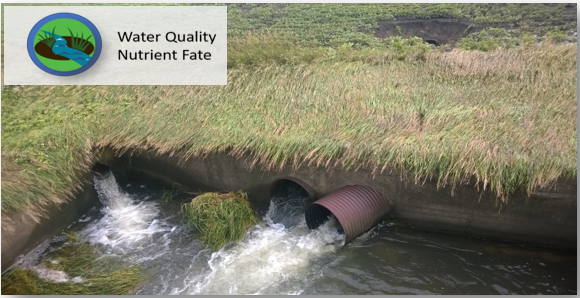Research Areas

Cash crop production following the adoption of in-field conservation practices has been identified as a barrier to the inclusion of conservation practices in conventional cropping systems. Thus, Dr. Armstorng designed several studies to investigate how in-field conservation practices impact soil N and P bioavailability, cash crop nutrient use efficiency, and crop yield within typical cropping systems of the Midwest.
Two newly funded research projects focus on nitrogen and phosphorus fertilizer management for corn following cereal rye cover crop adoption. Cereal rye is the most commonly grown cover crop in the Upper Mississippi River Basin. However, there is a lack of knowledge and data that elucidate N and P fertilizer management strategies to avoid corn yield reduction following cereal rye. The objective of the first study is to optimize starter fertilizer nitrogen rates for corn following a cereal rye cover crop. The second experiment is to determine if swine manure and red clover inclusion after wheat will impact nitrogen rates for the subsequent corn crop.

The re-emergence of cover crop adoption in the Midwest is strongly associated with soil health, nutrient conservation and the soil microbiome. A well known ecosystem service of cover crops is nitrogen scavenging that leads to increased water quality in tile-drained fields. However, less is known about the release of scavenged nutrients from cover crop residue following termination.
Dr. Armstrong designed studies to determine the synchrony of cover crop residue nutrient release with cash crop nutrient demand. Cover crop residue decomposition and N release are being measured within multiple crop rotations, and tillage systems. In addition, to monitoring cover crop residue decomposition, Dr. Armstrong’s research group established a research methodology to track the fate of cover crop residue and fertilizer N using 15N stable isotope techniques. This methodology allows him to quantify the interaction of cover crops with fertilizer N, the release of scavenged N from cover crop residue, and the absorption of cover crop N by a subsequent cash crop. Dr. Armstrong is also measuring the impact of N application timing and cover crop inclusion on soil N2O flux.
Cover crop and cash crop residue decompositon and bioavailiblity of nutrients are dictated by the soil microbiome. Dr. Armstrong and collaborators have designed research to evaluate the impact of cover crop species and mixtures on the soil microbiome composition, structure, and activity as it relates to soil N availability and release from cover crop residue. The influence of cover crop inclusion on the soil microbiome composition and structure are being analyzed across the following factors: crop rotation, tillage, and above ground cover crop diversity.

Recent literature shows a strong association between cover crop management, nutrient bioavailability and acquisition, and yield for the subsequent cash crop. There is a critical need to equip farmers with tools and methods to make assessments of the cover crop stand that will inform adaptive management for the following cash crop. Therefore, Dr. Armstrong’s research group developed methodology using remote sensing techniques to rapidly assess field scale spatial and temporal impacts on cover crop biomass and nitrogen uptake. This methodology will allow farmers to quantify the variation in cover crop growth and nutrient conservation, cover crop biomass levels, and carbon loads, all of which inform critical management decisions such as cover crop termination timing, adaptive nutrient management, and adjustment of residue management for effective cash crop planting. This study involves over 3,000 acres, collaborative agreements with 7 farmers and 3 Soil and water Conservation Service offices.
Furthermore, in collaboration with the state Natural Resource Conservation Service (NRCS), the Armstrong research group is developing digital agriculture techniques using remote sensing to rapidly survey historic and current cover crop adoption in the state and region. The ultimate goal of this effort is to advance the efficiency of the conventional cover crop survey methodology, whereby two 2-4 persons per county perform a 2-3 day driving transect survey. We anticipate that the new method will drastically reduce the person hours required and increase the survey accuracy.

The water quality and nutrient fate portion of Dr. Armstrong’s research program is guided by the goal of developing and evaluating the combined effect of nutrient loss reduction strategies, such as cover crop inclusion and 4R nutrient management (right time, right place, right source, and right rate) on water quality.
Dr. Armstrong and collaborators are conducting longterm analyses of nutrient loss reduction strategy scenarios in the Upper Mississippi River basin to increase water quality. The cropping system scenarios consist of the spectrum of nitrogen management that is common across the Upper Mississippi River basin and the inclusion of cover crops.
Additionally, Dr. Armstrong and collaborators are investigating the impact of watershed scale mass adoption of cover crops on water quality and soil health. The novelty of this study is determining the effectiveness of the cover crops on a watershed scale where he has little control of experimental variables and factors. Dr. Armstrong’s work in water quality is nationally recognized and serves as a scientifc reference for those responsible for assessing and developing nutrient reduction strategies to be implemented by farmers.
